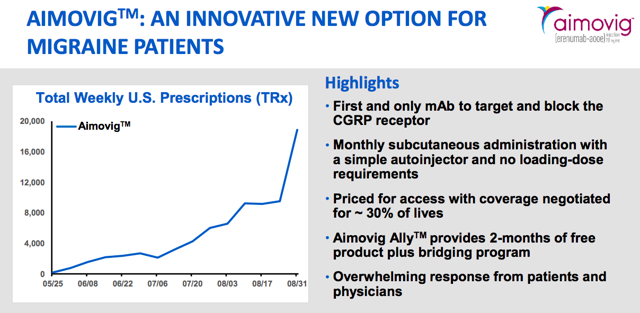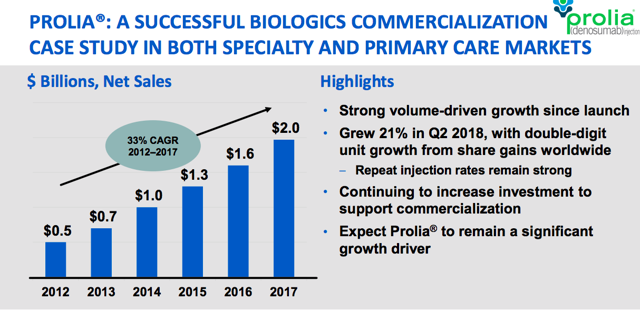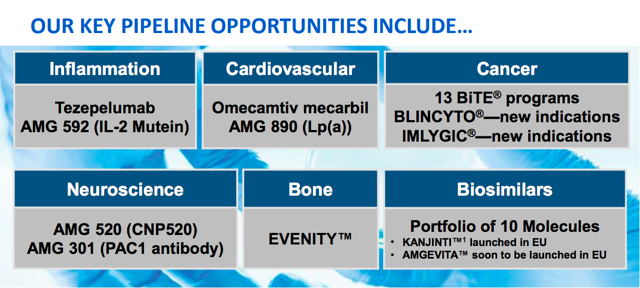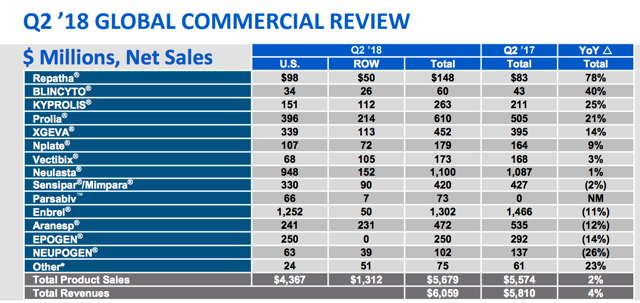Amgen (AMGN) is a market leader in biotechnology-based human therapeutics, with historical expertise in renal disease and cancer supportive care products. The company is facing growing competitive pressure from biosimilars in recent years, but management is doing a sound job of diversifying its revenue base. In fact, management considers that biosimilars could be an opportunity as much as a risk for Amgen in the years ahead.
Among the company’s most promising new products, names such as Aimovig for migraine treatments, Repatha for cardiovascular disease, and Prolia for osteoporosis look particularly strong.

Source: Amgen.

Source: Amgen

Source: Amgen
Amgen has a promising pipeline with multiple products in big markets such as oncology, cardiovascular health, bone health, and neuroscience. While it’s hard to tell how any of these products in particular may work in the future, it’s good to know that the company is betting on a wide variety of alternatives with attractive potential.

Source: Amgen.
Being a mature player in the sector, Amgen is facing increasing pressure from biosimilar competitors, and this is hurting revenue growth. But revenue is still moving in the right direction, and the business produces abundant cash flow. In fact, cash flow growth has substantially outpaced revenue growth over the past five years.

AMGN Revenue (NYSE:TTM) data by YCharts
Looking at the company’s revenue sources, Amgen is quite diversified, and growing revenue from the company’s younger products is more than compensating for the decline in revenue from products such as Embrel.
These high-growth products should account for a larger share of total revenue over time, and this will most likely have positive implications in terms of overall company-level revenue growth in the years ahead.

Strong cash flow generation has allowed Amgen to reward shareholders with generous dividends and buybacks over the years. Since 2011 the company has increased its dividend by more than 370%, while also reducing the number of shares outstanding by over 26% in such period.













Leave A Comment